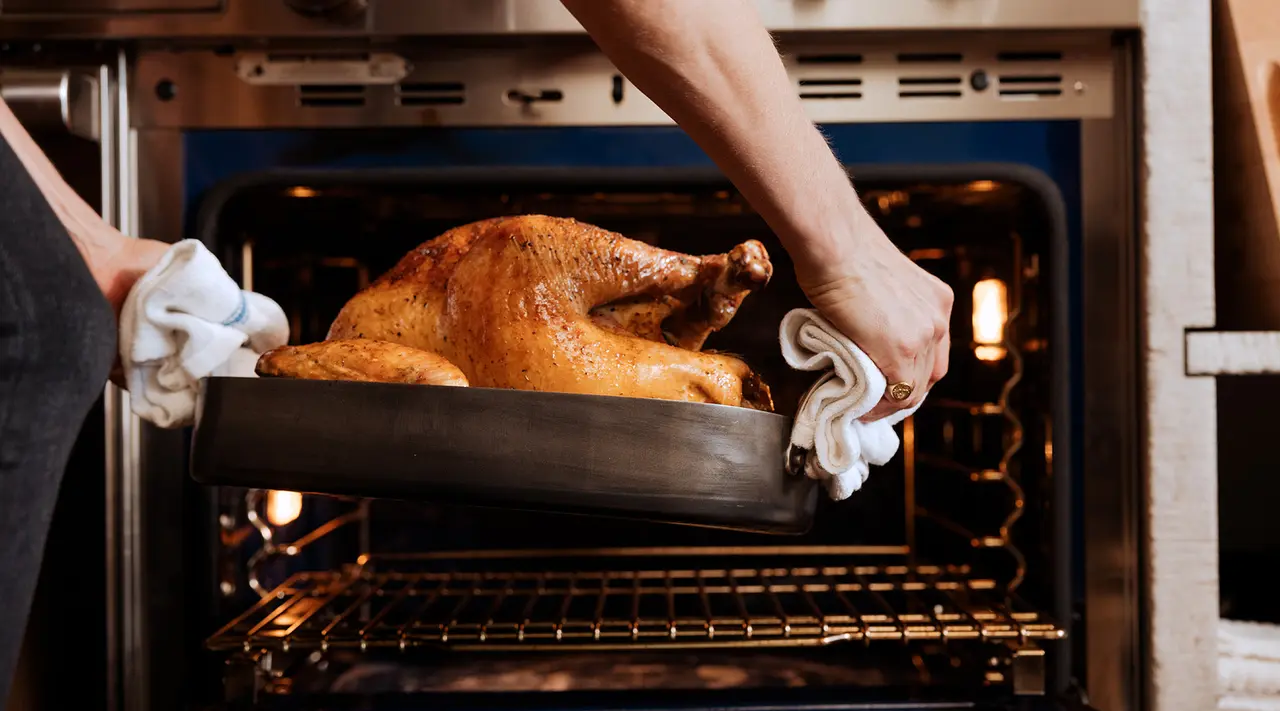Growing up in my mother’s household, most of the vegetables I consumed were boiled or steamed into waterlogged submission. I understand this choice from a practical standpoint—she worked a stressful full time job, was trying to make tenure as a woman in a male-dominated STEM field, and my sister and I were annoying and unhelpful—but from a flavor standpoint? Inexcusable.
Sometime during my adolescence she discovered that you could, in fact, roast vegetables, and it wasn’t even that much harder than boiling them. With the aid of a roasting pan, a stint in the oven will drastically improve the flavor of vegetables (as well as meat, tubers, and fruit) as natural sugars concentrate, skins crisp up, and interiors become fork tender. Where boiled vegetables have a vegetal flavor similar to how they taste in their raw state, roasted vegetables are much sweeter, with a satisfying textural contrast. Very quickly, roasting became her go-to cooking method.
Frankly, it should be yours too. When roasting, most of the cooking time is hands off, allowing you to move on to other prep tasks, attend to hosting duties, or, if you’re my mother, squeeze in a quick yoga session. Below, we’re walking through top tips for roasting like a professional.
What Is Roasting?
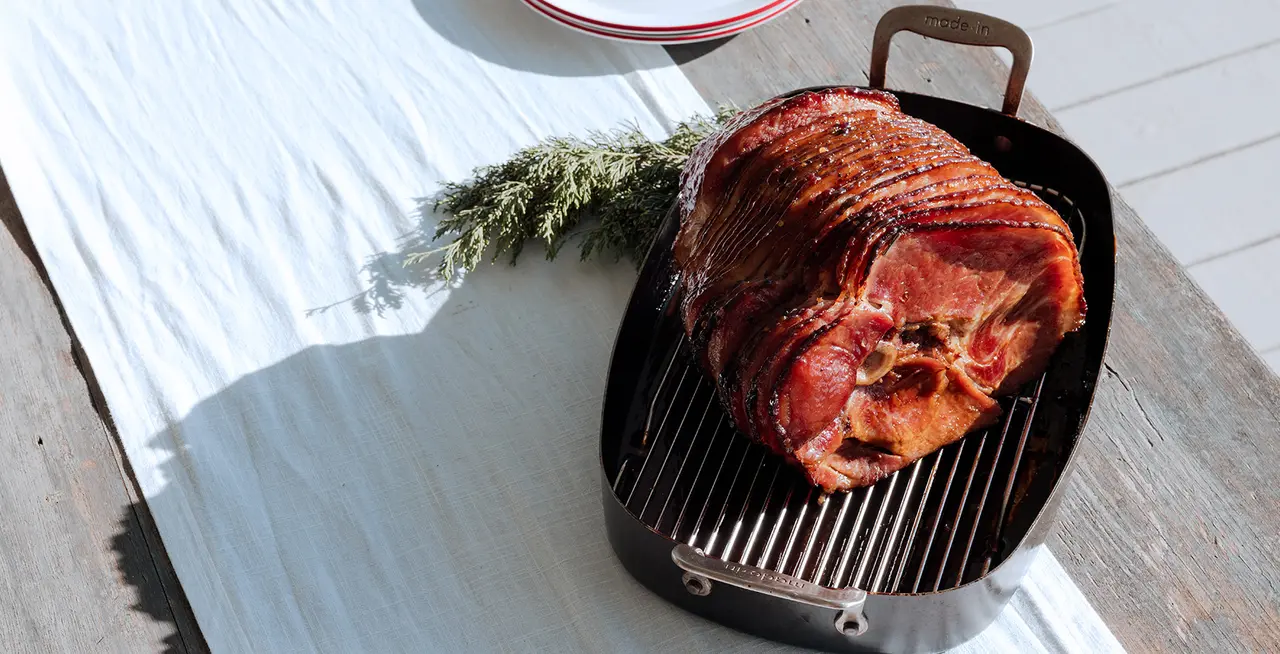
Roasting is a method of dry heat cooking, typically done in an oven at high temperatures. "Dry heat cooking" simply means that heat is transferred without the addition of extra moisture, usually with a goal of crisping and browning.
Typically, ingredients will be tossed with oil, salt, pepper, and other seasonings before being spread evenly in a roasting pan (or, in select cases, on a baking sheet). From there, ingredients are placed into the oven to cook and brown, requiring only a quick stir every now and then to prevent burning and sticking. Vegetables are often cut or sliced into smaller pieces, whereas meat is more commonly left whole.
Roasting vs. Baking
Roasting and baking are similar in that both involve using the oven, but beyond that they don’t have much in common. Ingredients that are roasted—meat, potatoes, vegetables—have a solid structure prior to going into the oven, whereas baking is the process of using lower temperature dry heat to set doughs, batters, and custards. Only after baking do these dishes have structure.
Roasting generally starts at a higher temperature, around 400F, while baking generally starts between 325-350F. However, some baking (like making sourdough) demands temperatures well above 500F.
What Foods Can Be Roasted?
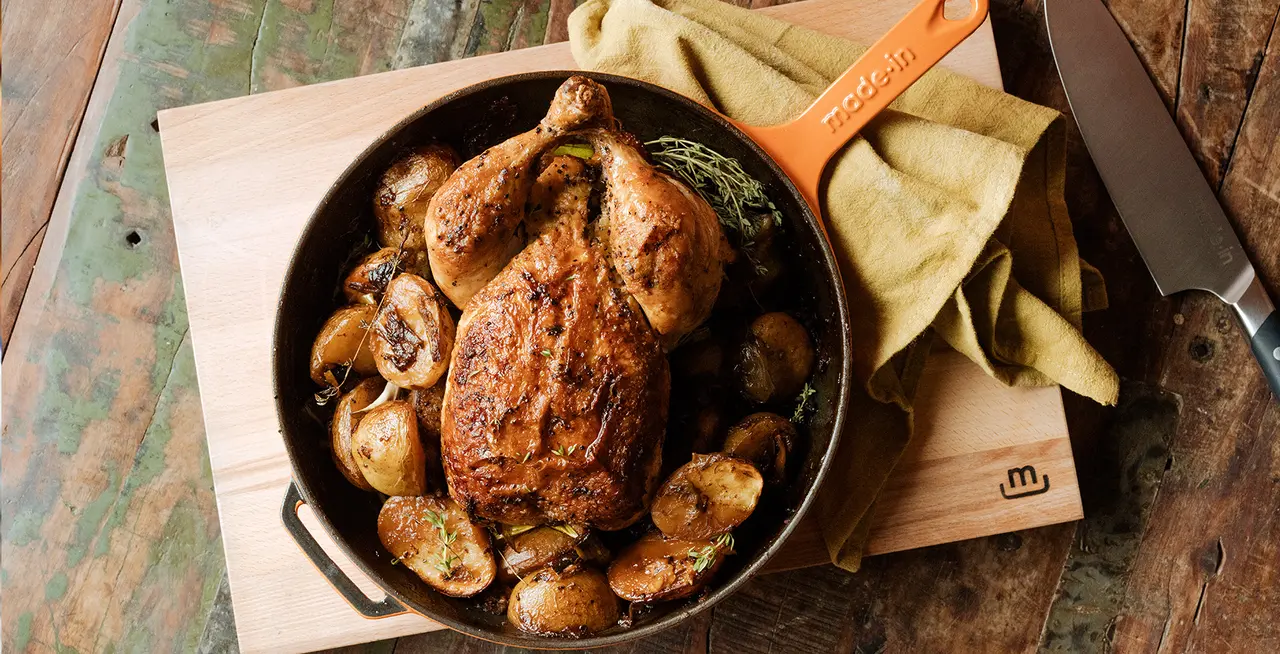
Roasting is commonly used to prepare large cuts of meat, poultry, and fish, typically as an entree or comestible centerpiece for the holiday table. Large, tough cuts are difficult to cook properly on the stove, but extended roasting tenderizes them, turning the formerly unpalatable cuts juicy and delicious. Whole or cut vegetables may be included with the roast, and are often prepared independently as a side dish or as part of a vegetarian-friendly main course.
Less commonly roasted are things like fruit and nuts. Not only are they perfectly delicious without cooking, but roasting tends to be associated with savory mains. And because they’re much smaller, there’s a greater chance for burning and sticking.
10 Tips for Roasting Success
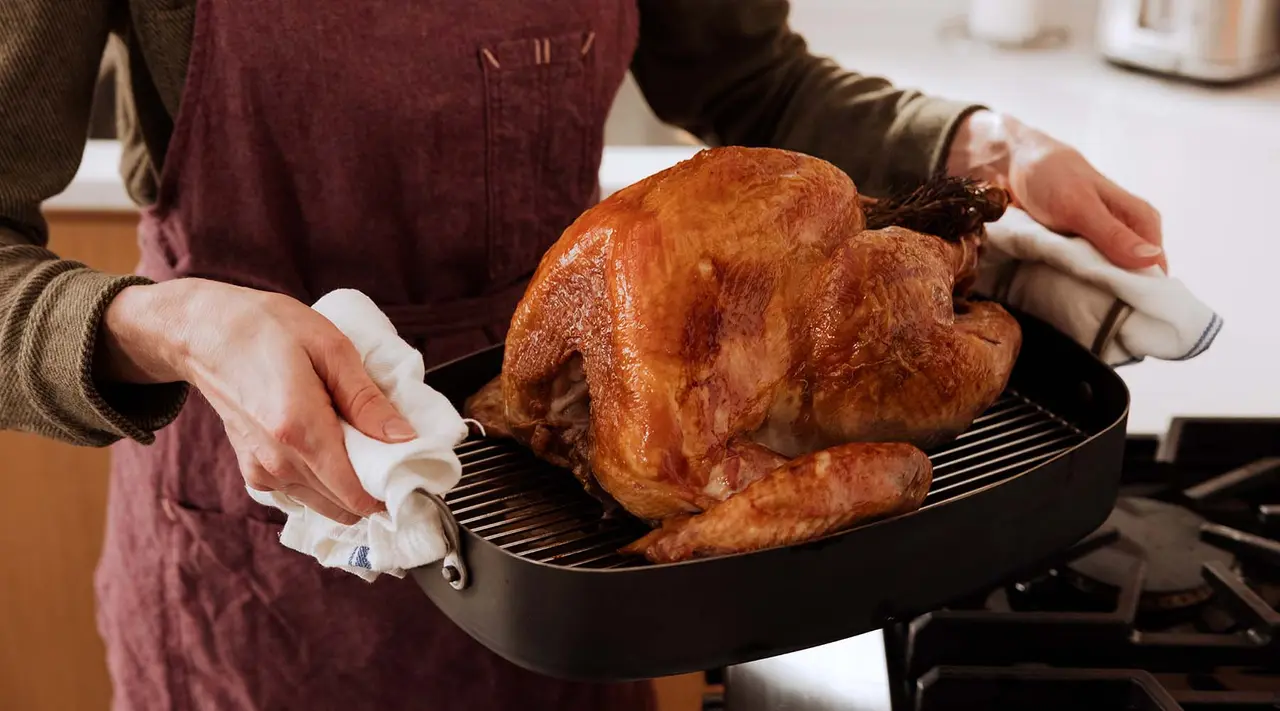
Unlike cooking methods that rely on steam or liquid to disperse heat, dry heat cooking methods like roasting allow ingredients to brown, crisp, and develop deeper umami flavors. If done correctly, the end result is a perfect bite with heightened textural contrast, more complex aromas and flavors, and a tender interior. Here’s how to achieve it.
1. Use the Right Tools
“Having a great roasting pan in your arsenal is really important,” says Chef Tom Colicchio. “People think they can get one of those flimsy aluminum things, but you can’t make a sauce with that. You can’t actually put it on the burner.”
We worked with Chef Colicchio to design the definitive Roasting Pan that would trap heat and lock in moisture, so everything emerges with a beautiful golden brown color and tender, juicy interiors. Constructed from French Carbon Steel, it’s able to heat quickly and then retain that heat, so that cooking and browning occurs evenly.
Unfortunately, there’s really no substitute for a high quality roasting pan—other cookware just isn’t capable of achieving the same results. “Sheet pans don’t have high sides, so they tend to dry out whatever you’re cooking,” Chef Colicchio continues.
“A roasting pan is a versatile piece of equipment, perfect for fish or meat. Especially if you want to cook everything in one pan. Everything just seems to cook and brown better.”
2. Temper Your Food
“Tempering” is just allowing an ingredient to come to room temperature before using it, like when a baking recipe calls for room temperature butter. When dealing with meat, tempering is an especially important step for ensuring even cooking.
If you transfer meat straight from the fridge and into the oven, you’ll end up with a tough, dry cut that browns much more quickly than the interiors are able to cook. Pull out smaller cuts 30 minutes ahead of cooking, and larger cuts at least 60 minutes prior.
3. Preheat Your Oven
Before roasting, preheat your oven for at least 20 minutes to ensure that its internal heat has a chance to stabilize. As soon as you open the door and add your roasting pan, the oven’s temperature will drop. In addition to tempering your ingredients, giving your oven that time to come up to your desired temperature will speed up the roasting process and encourage even cooking throughout your ingredients or proteins.
4. Use an Oven Thermometer
Ovens are notoriously finicky, and too many home cooks assume that just because they’re set their oven to a certain temperature it will provide that even heat quickly and consistently. In reality, most ovens are inaccurate in their temperature readings, have hot spots that will cook faster, and fluctuate throughout the roasting process.
An oven thermometer will give you a better sense of the accuracy of your oven, so you can adjust your temperature settings and cooking times accordingly.
5. Start (or Finish) on the Stove
Our Roasting Pan is thoughtfully designed to be able to go straight from the stove and into the oven, and vice versa. When you start on the stove, you can build some flavor and a light sear by sauteing vegetables with olive oil and aromatics then finish in the oven to retain moisture and ensure that tougher root vegetables cook thoroughly. The same goes with roast meats.
Alternatively, a roasting pan makes quick work of a reverse sear or pan sauce made from drippings, both of which require a pit stop at the stove on your way from oven to table.
6. Cook Low and Slow
“Roasting on a high, high heat will dry ingredients out,” Chef Colicchio says. “You want to slow it down, especially if it’s something big. Then, towards the end of the cooking, you can always crank it up to get that browning.”
This holds true for vegetables as well, especially starchy root vegetables like potatoes, which will develop shattery golden skins while the interiors turn almost custardy. At a high heat, you’re more likely to end up with dried out, leathery vegetables.
7. Embrace the One (Roasting) Pan Meal
Because some vegetables take longer to cook than others, recipes will often call for adding them to the oven on different sheet pans at staggered times. Chef Colicchio ignores this, trusting that the Roasting Pan’s high walls, curved edges, and a moderate heat will ensure that everything cooks evenly.
“I roast everything together. It doesn’t matter to me—leeks, fennel, red onion, carrots, turnips, even radishes,” he says. “If you’re cooking them nice and slow and they're evenly spaced in your Roasting Pan, they’ll all cook at the same rate. It’s fine.”
8. Decide Whether or Not to Baste
Basting is contentious, with adherents who swear by it on one end of the spectrum and defectors holding it in utter contempt at the other. For the most part, it doesn’t seem to do much for large roasts, offering no real benefits in terms of flavor or moisture that penetrates beyond skin-deep.
When preparing roast chicken or turkey where crispy skin is the end goal, basting will only add moisture and prevent skin from achieving peak crispiness. Instead, opt for a dry brine which will improve flavor, texture, and appearance. There is one caveat: for pan-roasted fish, steak, and other proteins, butter basting adds depth of flavor and promotes a satisfyingly crusty exterior, all while helping retain moisture and preventing overcooking.
9. Rest Your Meat
Especially with larger cuts of meat, cooking doesn’t immediately stop as soon as you pull it from the oven. When setting your timer, account for carryover cooking and allow your meat to rest for 10-20 minutes to ensure that juices have a chance to reabsorb before carving.
10. Roasting Pan Care and Cleanup
Because our Roasting Pan is constructed from Carbon Steel, it requires a little bit of routine maintenance to keep it in mint condition. In return, your pan will develop a handy non stick layer that makes cleanup a breeze. Making sure your Roasting Pan is well seasoned before you use it is the first step, and will make sure that the Carbon Steel cleaning process is completely pain-free.
Ready to Cook?
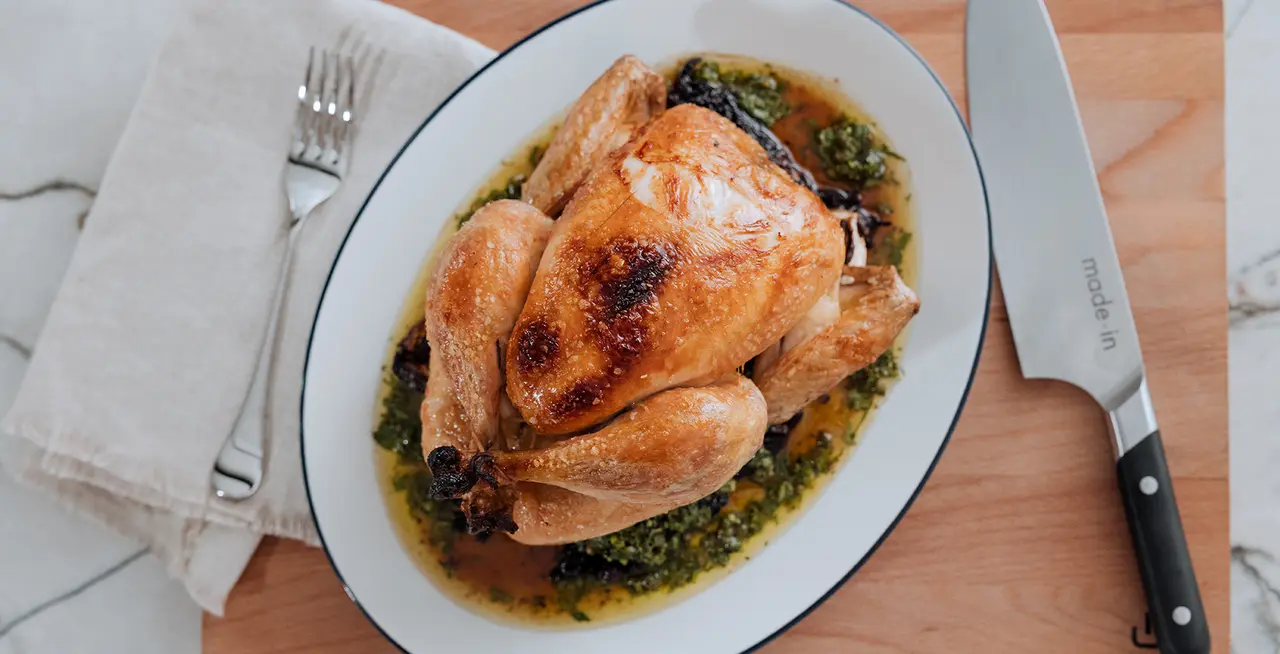
No matter what you’re roasting—but especially when you’re tackling larger cuts of meat—nothing will yield the same results as a roasting pan. Vegetables become crisp and fork tender without drying out, while proteins transcend into juicy morsels with crackling golden brown skin.
Even better, you’re able to turn pan drippings into a luxurious gravy or pan sauce in the same pan right on the stove, all in the time that your meat is resting. And now that you have all the expert advice to do it perfectly, it’s time you gave it a go—perhaps with Chef Colicchio's Slow-Roasted Turkey with Herb Butter and Gravy.
